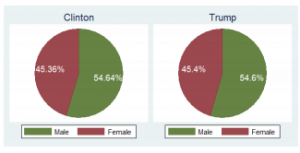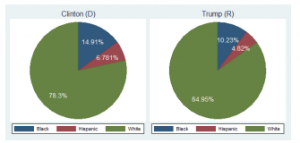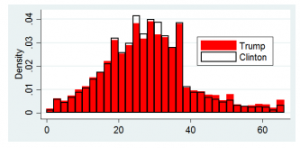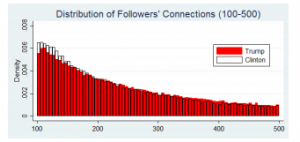In March of 2016, three researchers from the University of Rochester set out to conduct an experiment. Yu Wang, Yuncheng Li, and Jiebo Luo ended up with a paper titled Deciphering the 2016 U.S. Presidential Campaign in the Twitter Sphere: A Comparison of the Trumpists and Clintonists. The paper compared the Twitter followers of the two major party candidates, Hillary Clinton and Donald Trump, of the 2016 presidential election.

The paper showed findings about gender that the researchers found interesting. Clinton actually trailed Trump in female support, though by a small margin. This was after Trump’s comments about Megyn Kelly, but prior to his sexual assault comments.

Both candidates have a primarily white following. However, Clinton has a slight in follower diversity.

Fitting with the stereotype that Republicans tend to be older and whiter than Democrats, Trump leads amongst older voters on Twitter. He also carries the under 18 group, though that does not exactly help him in the election as those people cannot vote. Clinton has a solid hold on the 18-40 demographic, arguably the largest, but also a group with lower voter turnout.


To measure the social standing of each candidate’s followers, the researchers used the number of followers each follower had. They found a positive correlation between social status and number of followers. Here, like with age, Trump also wins in the extremes. He has more followers with fewer than a dozen followers themselves than Clinton does, but also more with over 200. Clinton dominates the “middle class,” with her supporters having between 12 and 200 followers themselves.
If you want to read Yu Wang, Yuncheng Li, and Jiebo Luo’s paper yourself, you can find it here.